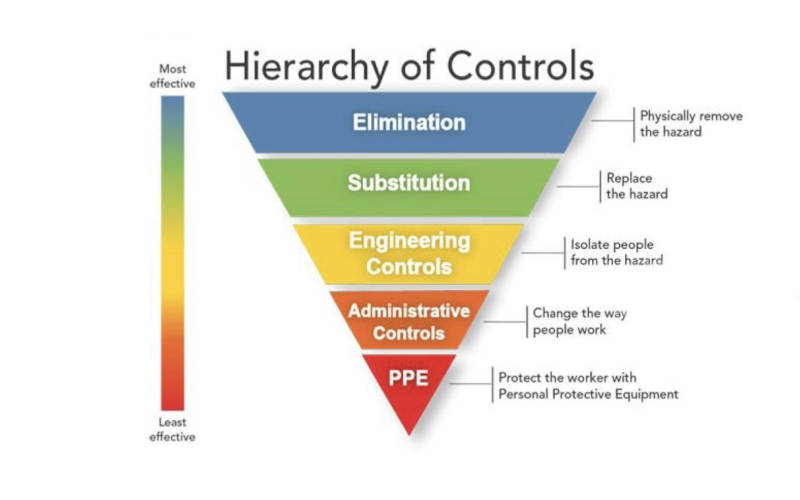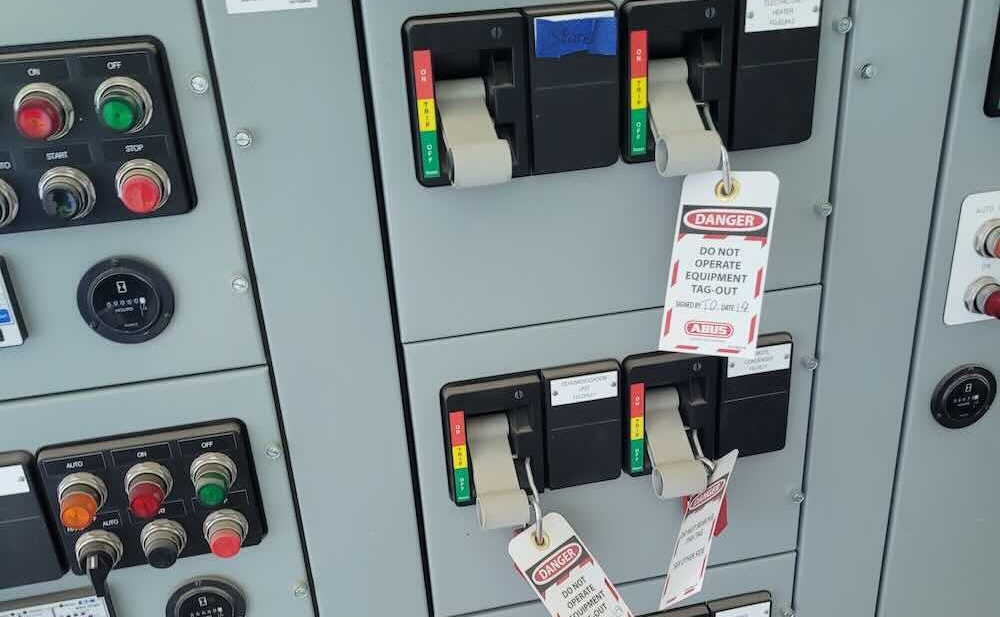Low-voltage switchgear distributes power and protects equipment within a facility’s electrical system. Power is distributed through low voltage air circuit breakers and sensing faults in the system. Then it can open the necessary circuit breakers to clear the fault and maintain power to the rest of the facility.
Low-voltage switchgear distributes power and protects equipment within a facility’s electrical system. Power is distributed through low voltage air circuit breakers and sensing faults in the system. Then it can open the necessary circuit breakers to clear the fault and maintain power to the rest of the facility.
Over the last few years, low-voltage switchgear has matured into an intelligent power distribution solution by providing greater information about the system operation. Features have been introduced improving overall system reliability and performance.
Using draw-out circuit breakers and industry-related standards, low-voltage switchgear first entered the electrical industry in the 1930s, when circuit breakers were solenoid-operated and employed electro-mechanical trips. The next major advancement occurred in the mid-1950s, when circuit breakers with stored energy mechanisms were introduced. In the 1970s, technology began to grow rapidly with the introduction of solid-state tripping devices. By the 1980s digital-trip units were using Root Mean Square (RMS) sensing, which aids in accurate protection when harmonic content is present.
Along with evolving protection capabilities, the use of digital low-voltage switchgear technology provided improved metering data and communications. This allowed power management systems to link various individual components into unified low-voltage solutions.
These communication protocols, born from relatively slow twisted pair mediums of individual devices, soon offered full information transfer for one substation at hundreds of megabits per second. These communication improvements are featured on the most advanced low-voltage switchgear solutions today.
Circuit breakers used in low-voltage switchgear also have evolved, providing higher interruption capability in smaller physical envelopes, transitioning from iron-frame circuit breakers to circuit breakers with a high dielectric, molded enclosure.
Choosing low-voltage switchgear
Generally, low-voltage switchgear is used in industrial and critical power applications, while integrated switchboards are typically used in commercial applications.
Low-voltage switchgear has circuit breakers that feed larger and more severe duty loads than integrated switchboards. Low-voltage switchgear circuit breakers provide power to motor control centers, switchboards or large motors located in various sites throughout a facility.
The low-voltage switchgear circuit breakers have more metering and protection of the circuits than the loads typically found on switchboards. This provides protection and maintain continuity of service to as much of the facility as possible. Also, the industry standards for low-voltage switchgear vary greatly from those that apply to switchboards and integrated switchboards.
Minimizing arc flash hazards
Arc flash is the release of energy produced by an electric arc with temperatures reaching 35,000 F. According to the NFPA, each year more than 2,000 people are treated in burn centers for severe arc flash injuries.
Since the ability to minimize arc flash energy is crucial, many features are now designed into low-voltage switchgear. By using precautionary measures such as remote monitoring, remote racking and real-time alarms and diagnostics, end users can reduce the risk of an arc flash injury by minimizing the need for an operator to be near live equipment.
Systems equipped with these features enable fault reports and event logs based on accurate, system-wide information before, during and after an event for each breaker. Systems offering offsite-monitoring capabilities give users a constant flow of information to help monitor a system and know exactly when and where something needs to be repaired.
Intelligent communication
Low-voltage switchgear will continue to evolve and meet the needs of users and various applications by leveraging technological advancements. The increased awareness of arc flash will continue to influence advancements in providing fast protection while maintaining selectivity.
On the horizon are innovative approaches to keep operators away from live equipment for routine procedures such as metering, opening and closing circuit breakers and racking circuit breakers in or out of their cells.
Since many facilities and sites are losing experienced electrical maintenance personnel, it is more important than ever to have switchgear that is both easy to use and intelligent, providing detailed information regarding the dynamics of the system. With staff reductions, communication of power system information is becoming vital, whether for gathering information for a single facility or multiple facilities in various geographic locations.
Consequently, ease of communication and providing information — not just data — will continue to evolve, as will better integration of protection and control functions.
Over the past 70 years, low-voltage switchgear reduced exposure to arc-flash hazards and increased reliability for power distribution protection and monitoring. The ability to protect and track power distribution from anywhere at anytime is a key feature for optimum performance and increased arc-flash hazard reduction. While the advancement in arc flash prevention features improves user safety, it also will improve productivity and reliability in the long run.
At some point there will be a technological leap to provide even faster interruption of faults, similar to vacuum technology becoming applicable in medium-voltage equipment in the 1970s.
While low-voltage switchgear has matured, it points to even more promising solutions ahead.
| Author Information |
| Jane Barber is the Entellisys low-voltage switchgear product manager for GE Consumer & Industrial’s electrical distribution business. In 25 years at GE, she has led the development and management of low- and medium-voltage switchgear, protective relays, power-management systems and aftermarket products. |
Checklist: What to look for in a low-voltage switchgear solution
Make sure your low-voltage switchgear solution delivers these features to help reduce arc flash hazards and increase flexibility and reliability:
Safety
Use zone-based protection modes such as bus differential, zone-selective interlocking and multi-source ground fault protection to provide fast and selective protection in the event of an arc flash
Remote racking eliminates the need for users to face a moving breaker during rack-in and rack-out
Remote HMI provides operators with easy access for monitoring and control outside the arc flash zone
Multiple protection setting groups allow for different instantaneous overcurrent and/or short time settings to change a circuit to minimum pick-up and maximum speed when personnel will be near energized equipment.
Flexibility
Simplified design using architecture that significantly reduces component counts and wiring to expedite installation and startup as well as reducing longer term maintenance
Easily upgraded system capabilities, such as software upgrades for added functionality, allowing the user to decrease system downtime and increase productivity by eliminating the need for new devices and wiring to be installed.
Reliability
Redundant protection and control systems provide continuity of service as well as the ability to make repairs without downtime
Event log and alarms provide reports based on actual system dynamics and user-set alarms, allowing for real-time monitoring to inform users of situations before problems arise
In high resistance ground fault (HRGF) systems, HRGF protection indicates the circuit breaker load where the ground fault exists and also includes priority tripping in the event of multiple ground faults. This provides fast efficient detection as well as protection should two ground faults (on different phases) occur at the same time.
Arc Flash University to debut
Low-voltage switchgear is a critical link in the chain of potential events that could lead to an arc flash incident. That’s why it’s critical to understand its place in the electrical distribution hierarchy — physically, electrically and strategically. However, switchgear is not the only element to consider when preventing workers and equipment from harm resulting from arc flash.
Regardless of your circuit protection philosophies, the danger, devastation and losses — both human and monetary — transcend hardware and software selection. Many people — thought leaders in our industry — are working together on committees, panels and special working groups to combat arc flash.
During 2008, Plant Engineering magazine will present Arc Flash University, a series of monthly Webcasts on the topic of arc flash. Each month a different aspect of arc flash will be examined, with industry experts making presentations and answering questions from attendees on the topic.
Arc Flash University is covered in more detail on page 5 of this issue, as well as on



